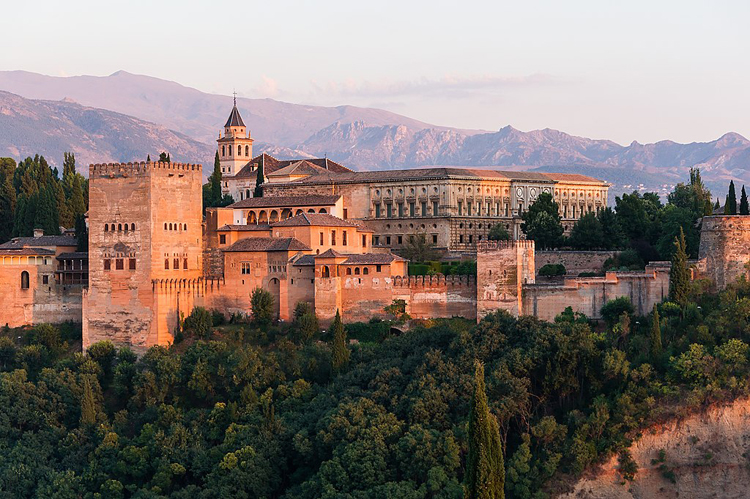
Photograph: Public Domain
The heart and soul of art
“‘It took my breath away’ would be an example
of a direct experience of Beauty.
This is not an intellectual experience,
no special training or education is required.
The experience bypasses the mind
and goes straight to the heart of our true nature.”
SCOTT GUYON, architect and composer, grew up in New York in the 1960s as a child actor but his most natural passion was assembling and composing forms in both physical materials and musical sounds. As a young person, he renovated historic buildings and studied music composition with jazz composer, Bill Dixon, at Bennington College. He was part of the 1970 inaugural class at the “experimental” Hampshire College in Amherst. He went on to study design at the Art Institute of Chicago and completed his architectural training at the College of Architecture within the University of Kentucky under the Le Corbusier scholar, Anthony Eardley.
Scott established his Guyon Architects Studio in 1985 and is known for a wide variety of award-winning buildings including his New Native houses, which synthesize international modern design with vernacular folk houses and barns of the Appalachian region. The New Native houses have been constructed both in Europe and the United States.
In 2009, after a fortuitous meeting with the nondual teachings of Rupert Spira, he began to reconcile a lifelong passion for the pursuit of Beauty in his own work with the profound and brilliant ideas of Spira’s nonduality offerings. A few years later, Scott began work on his précis, Why Beauty Matters, originally to be used as an “educational” piece for his building clients. The ten-part guide has evolved and is now an almost spontaneous outflowing of the nondual understanding featuring Beauty as a sacred portal into the divinity of our everyday-lived experiences.
Scott is currently forming a foundation that will provide “Aesthetics Mentoring” for young adults in a variety of city neighbourhoods across America. For further information, visit Guyon Architects.
This little book is my word about the only quality that truly matters—Beauty.
The content of these writings flows from a paradigm shift in the cosmology of our culture that is happening at this time. The timeless recognition of Consciousness and its productions (the apparent world around us) is also experienced as ‘Beauty’. The old ‘materialist’ culture is giving way to a deeper Truth; the unity of everything.
Beauty is one way into this new understanding. After 30 years of reaching for it in my own work, here is a guide for everyone.
—Scott L. Guyon, architect and composer
INSTALLING THE BLUE NUDES | Matisse from MoMA and Tate Modern
Why Beauty matters
If the experience of a work of architecture (or any art object) is to move beyond its bare material presence then there must be some quality intended by its maker that transmits itself, invisibly, to the viewer.
Most of us, perhaps all of us, have had the experience at some point in our lives of encountering an object or a situation in which our normal sense of ‘time’ was suspended or altered. This can occur while walking in a landscape, listening to music, standing in a room or countless other situations. Often times this is referred to as ‘overwhelmed by the beauty of the moment’ or a similar phrase in which the mind attempts to explain the unexplainable. As we ponder our memory of these moments the flavour may linger but there is inevitably a longing to return to this realm that now seems to have been fleeting and temporary.
This is the experience of Beauty.
It is not simply a neutral alteration of waking consciousness; it is a rendezvous with our deepest nature. This is why we long for it, precisely because it is mostly veiled by the assumptions of the society we live within. Our culture has deeply conditioned us to point towards a practical and materialist belief in measurable reality. This leaves us thirsting for the recognition of our true self. A true self that is not confined by the limits of ‘mind’ but rather is open, sensitive, unlimited and not subject to time. Beauty is one word that can be used to refer to our ‘true self’ when it is provoked to step forward and revel in the joy of an expanded experience.
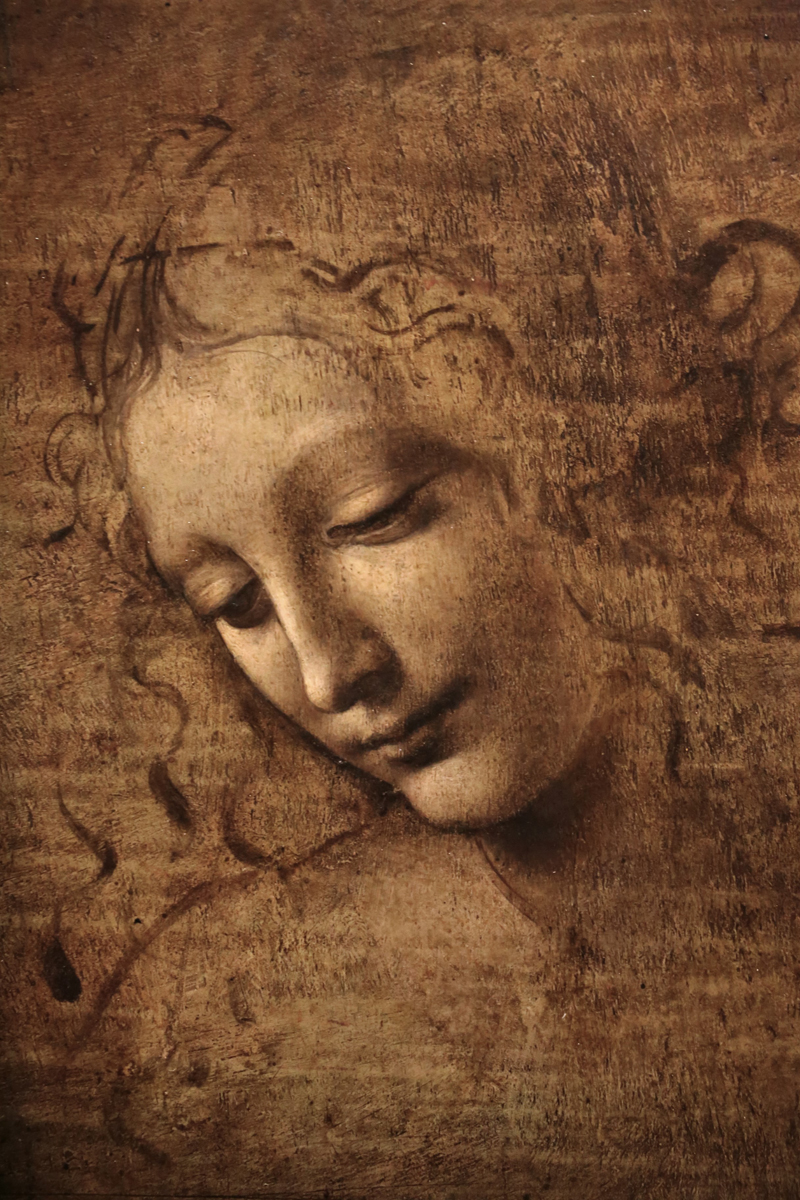
Photograph: Public Domain
The utter practicality of Beauty
If Beauty is to play a significant role in our lives then it must be present in our direct experience. In this way, Beauty is received as a practical part of each day and can be appreciated at any time and in any place.
Because any ordinary activity such as walking through a lovely space can evoke the experience of Beauty, it is often felt as a kind of suspension of our normal sense of time and sometimes accompanied by a sense of wonder or perhaps a feeling of ‘home’ or deep truthfulness.
What is the importance of this to any of us?
It is simply this—happiness.
When a work of architecture (or music, art, etc.) has its origins in this understanding it will possess the power to nourish this hunger in all of us. Instead of a longing for this ‘food’ we so desire, suddenly, we are home in the realm of happiness itself. This is not an exotic destination, it is very simply who we really are! Of course, when our conditioned mind comes back into play it immediately downgrades the experience as being just a ‘lapse’ in its otherwise busy schedule.
When this experience of Beauty is received it seems to spontaneously return us to our true nature in ways that are not found in customary activities. I remember walking into the public space at the Salk Institute by the architect Louis Kahn (see below) and suddenly noticing that I was present in the moment but I was not thinking. It would be later that day that I would recall something of the experience and decide: ‘that was overwhelmingly beautiful; I felt a deep silence all around.’ It was the best the mind could do in an attempt to describe the indescribable.
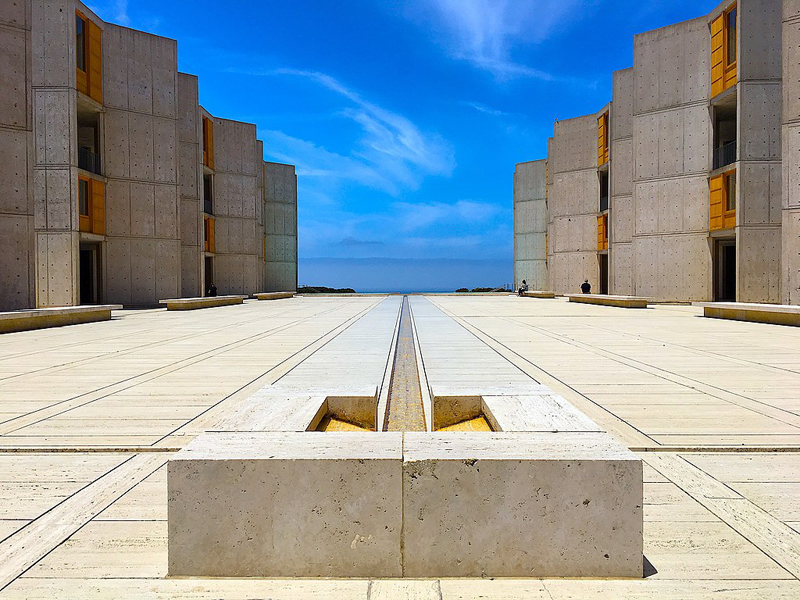
Photograph: [CC BY-SA 4.0]
Creative Commons Attribution-Share Alike 4.0 International
Approaching Beauty— ‘the nuts and bolts’
The architect Frank Lloyd Wright was once asked if he believed in God. He replied, ‘Yes and it’s spelt N-A-T-U-R-E.’
While Beauty is an undeniable natural experience, it is also sometimes the result of an arrangement of elements placed by the artist, musician or architect in such a way as to evoke a deep memory in the viewer of a sense of harmony and Truth.
Nature with its forms and geometries is a powerful reference for the creative maker. Countless systems of colour and proportion take their direction from the natural world. Time and again these references will inform a human creation (music, painting, building, etc.) with a resonance that points towards its origin.
In architecture, the use of geometries that flow from these natural principles can result in a kind of attunement with the viewer. ‘It took my breath away’ would be an example of a direct experience of Beauty. This is not an intellectual experience, no special training or education is required. The experience bypasses the mind and goes straight to the heart of our true nature.
As an example, the golden section spiral (see below), is common throughout the natural world. A golden section rectangle has the property that by removing a square from it another golden section rectangle is produced and this spiral uses that fact to create quarter arcs in each of the squares. When a space or an object takes its form from these relationships there is a natural and powerful ‘echo’ of cosmic harmony that vibrates throughout our senses as we take in the experience.
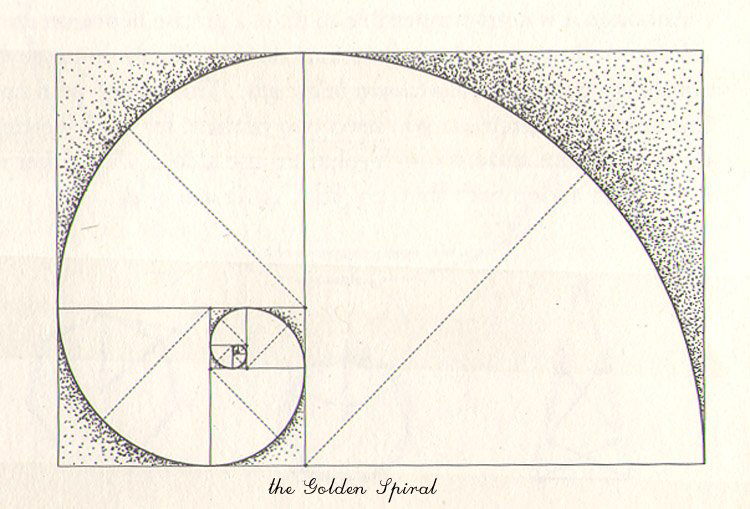
The colour of Beauty
Colour is always a direct experience that goes right to the heart of our senses. It is, after all, always derived from ‘white’ light. The daylight, when filtered through a glass prism, divides itself into a spectrum that we perceive as individual colours. It is as if we have ‘unlocked’ this display and are then invited to place these colours around our environment as a delightful reminder of the countless variation and diversity of the natural world.
A field of wildflowers or the markings of a colourful bird are simply ‘reflections’ of the ever-present daylight expressed back to our eye at the particular vibration that we call ‘red’ or ‘green’ or ‘blue’, etc. Even beyond the phenomenon of ‘seeing’ there are other vibrational frequencies that a musician can use to create ‘sounds of colour’ at the level of ‘hearing’.
In architecture, colour can be used to evoke a feeling of ‘depth’ in a room or to express a range of feelings from poignancy to playfulness. As with other aspects of Beauty, the message is delivered directly to our hearts in a way that ‘goes around’ the thinking mind and lingers as a kind of perfume in our experience. Again, our senses are the instruments that deliver to us this ‘food’ that we know as Truth but which words will fail to explain.
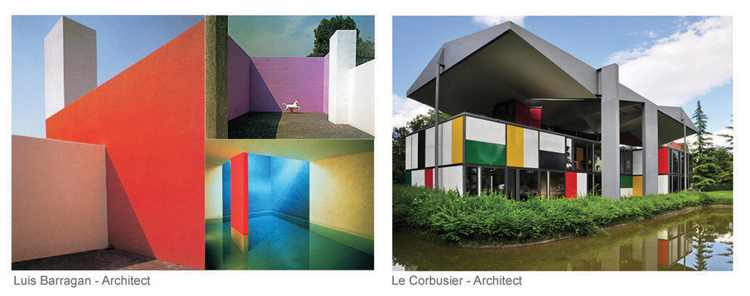
Natural Beauty— ‘arranging the landscape’
‘The greens should be ranged together in large masses as the shades in a painting; to contrast the dark masses with the light ones, and to relieve each dark mass itself with little sprinklings of lighter greens here and there.’
—Henry Hoare, landscape designer
If the maker of Beauty (artist, musician, architect, etc.) is to succeed in evoking a sense of our true nature then it is sometimes necessary to ‘rearrange’ or intensify what would otherwise be a ‘found’ or natural setting. Such is the case with a landscape garden or park.
All of us, at one time or another, have had a ‘special’ experience while standing or walking in a landscape. The combination of the sun’s angle, a dramatic contour or overwhelming greenery with floral colour can trigger the experience of being ‘transported’ out of time and into the realm of suspended wonder. The landscape maker takes the elements of nature and ‘rearranges’ these elements to suggest a natural ‘place’ that in reality has been composed.
Why would we do this?
For the simple reason that when this designed landscape succeeds it engenders a powerful memory of our true origins. We have an experience that ‘jumps over’ the organizations of the mind and takes us directly to a connectedness with all that is. Heading ‘home’ is the direction it takes us and we love this journey because it rings with the sound of who we truly are.
Beauty at work.
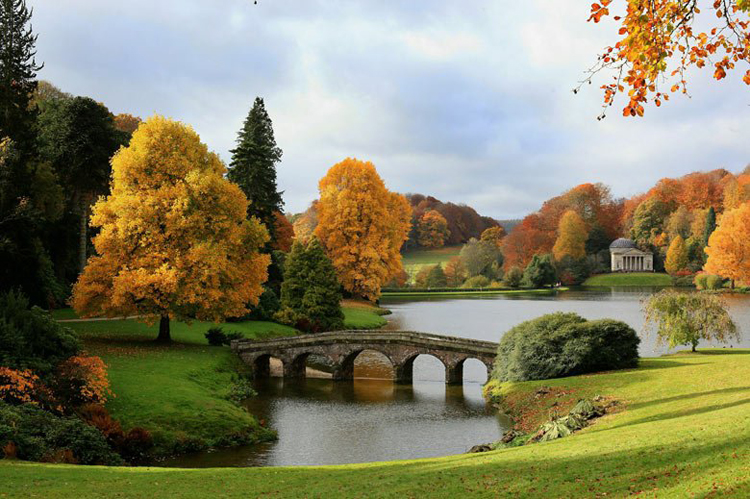
Photograph: Public Domain
Natural Beauty and the placed object— ‘diamond in the (beautiful) rough’
‘Art (architecture, music, etc.) heals the fundamental malaise of our culture, the feeling of alienation, despair, separation, the longing for love.
We do not view a work of art, we participate in it. The nature of art is to bring back the world we have rejected, the world that we have deemed other, separate, made out of dead matter … to bring it close, intimate, to realize our self as one with its very fabric […]
The role of the artist (architect, musician, etc.) is to transmit to humanity the deepest experience of reality. Art is remembrance. It is love. It is like a sword that distinguishes between appearances and reality.
Beauty is the form of God.’
—Rupert Spira, poet and teacher
We have previously looked at the ‘arranged’ natural landscape, now let us look at another approach to Beauty; the beautiful object ‘placed’ in the untouched or found landscape. As before, the maker has the same objective … to evoke, trigger and inspire that which is often lost in our daily experience; the encounter with our deepest nature. Whether this encounter with our ‘sense’ of Beauty is caused by an object made by a trained maker or it is inspired by a native intuition the result is the same. (See below—F. L. Wright’s house in Pennsylvania, R. Meier’s house in Michigan, the tribal ‘tree-house’ from Indonesia and even an entire city as an ‘object-in-the-desert’ in Yemen.)
So, again and again, when the maker is inspired by a calling that flows from our deepest nature the resulting ‘form’ will be saturated with this understanding and it will infiltrate our experience and leave us ‘speechless’ … until the mind starts up again and attempts to label that which cannot be labelled.
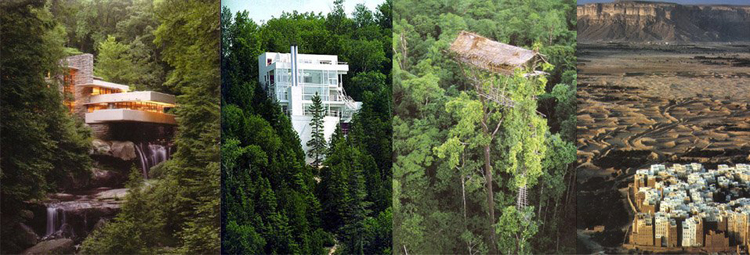
Photograph: © Guyon Architects
The form of Beauty (as form)
When an apparent object is shaped or fashioned by a maker (artist, architect, etc.) it offers the possibility of entering a new realm. As we view or experience that object its quality arrives at the doorway of our senses as one complete perception. The mind will then rise up and begin to ‘divide and conquer’ the immediacy of the experience. We will question as to whether the object is smooth or coarse, thick or thin or whether it belongs to this category or that category. However, if we stay close to our raw experience then the object will communicate to us the origins of its true intent … and if the maker of the object is aligned with that essential nature then that object will enter a new realm.
This realm is Beauty.
It is surprising! It also becomes clear that although the object has so-called objective qualities (surface, shape, mass, etc.) the effect of this experience has a dissolving quality that suggests that the object is evoking this sense of Beauty while at the same time ‘giving way’ to its lack of solidness.
Whether the object is regular in shape or derived from the natural world or fashioned to depict a shocking ‘new’ form the effect is the same; it takes our senses out beyond any label and leaves us swimming in our direct experience.
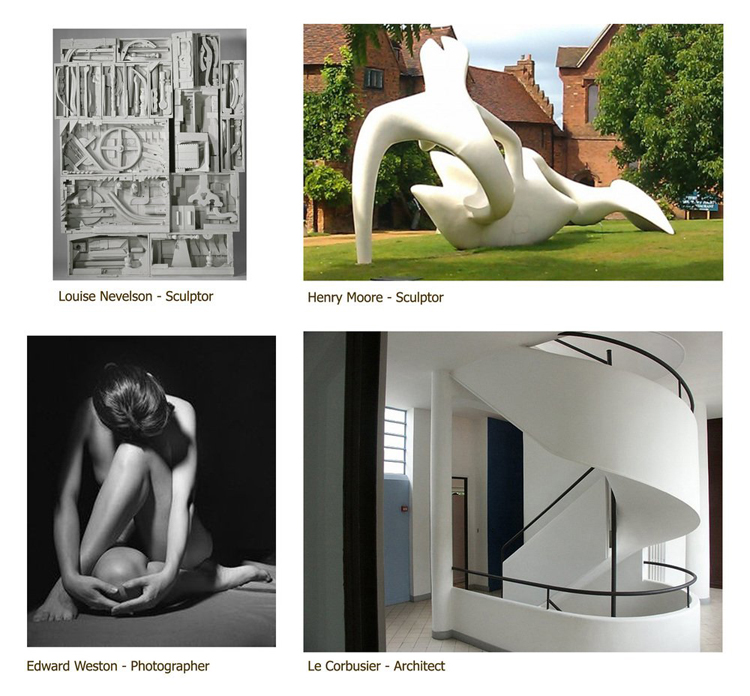
The space of Beauty (as space)
If space is thought of as the counterpart of form then it presents itself to us as what form is not. In others words, an object needs the space around it to be known as the form that we perceive.
Now let us suppose that we are going to make a beautiful space that will not require an object within it for us to have the experience of the space itself. When the maker (artist, architect, etc.) of such a space proceeds from this premise then the resulting ‘shaped space’ can communicate to us a profound sense of power and Beauty.
The power of these spaces lies in an indescribable message that exists somewhere beyond our ability to name such a space as an object. Most of us have, at one time or another, walked into a breathtaking space. In nature, it could be the Grand Canyon or in a building, it can be found in a mediaeval cathedral. In any case, there is a shock wave of awe that ripples through our senses as we are delivered right to the heart of Beauty … as space.
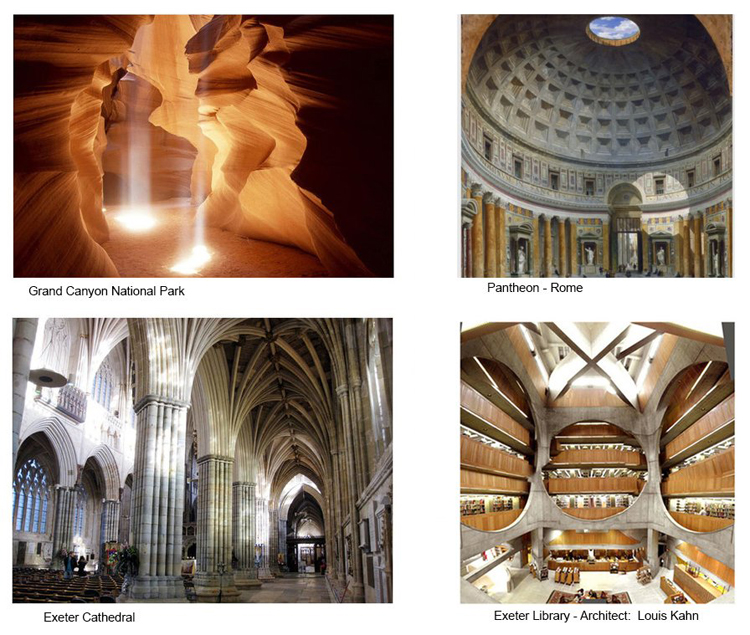
The painting of Beauty (as in Cézanne)
‘One moment in the life of the world passes. To paint the reality of that moment and forget everything for that. To become that moment, to be the sensitive plate. To give the image of what we see, forgetting everything else that has happened before our time.’
—Paul Cézanne, artist
The two-dimensional surface of the artist’s canvas can become a ‘platform’ for the expression of Beauty that can evoke the deepest connection with the core of our experience. Such is the case with the painter Paul Cézanne.
As Cézanne explores the world around him, he returns again and again to the same view or the same subject. This is not mindless repetition; it is, rather, his relentless fascination with the origin and essence of ‘seeing’ or perceiving. As his exploration deepens there is a dissolving quality of the viewed object in which the separation of pieces and parts begins to ‘melt’ into the seamless quality of oneness.
In this way, he is taking us back toward the source of our experience prior to the naming of the object. This is the territory that lies just prior to our minds rising up to explain (in words) what we are seeing. This is what we know to be true. This is the ‘gut’ feeling or the ‘heart knowledge’ that is certain to us. This is the territory of Beauty!
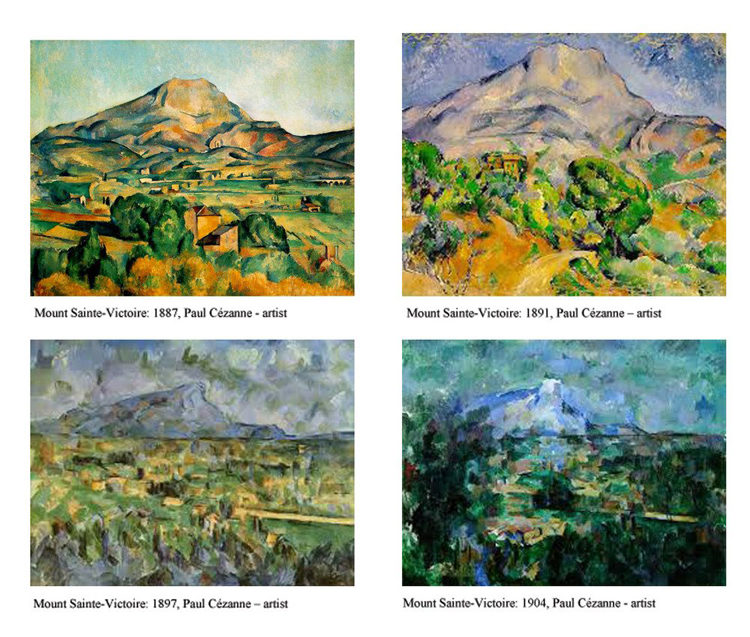
The sound of Beauty (as music)
To ‘see’ a beautiful object or travel in a beautiful space is the experience of Beauty at the level of the visual. Now we will explore the nature of Beauty when it is experienced in the realm of ‘hearing’; that is to say when a composer or musician embarks on the arrangement of sounds in order to evoke our deepest origins.
Music has a unique property that can be experienced as the most direct of all expressions. It is a property that vibrates immediately into our awareness. Setting aside the fact that it can be recorded and later replayed, it is an experience that comes to us, permeates us, and then it is gone! What is left behind is a kind of ‘ghost’ or lingering perfume that remains without any object-quality. This ‘quality’ has within it the source of our true nature; prior to thought or concept, and is seamlessly joined to everything it touches.
Beauty in its most subtle form …
Beethoven String Quartet No 14 Op 131 in C♯ Minor Alban Berg Quartet
Bill Evans, My Foolish Heart
Claude Debussy, Nocturne
Miles Davis, Blue In Green
[Why Beauty Matters was first published on Guyon Architects
and then subsequently on Rupert Spira, The Essence of Non-Duality]
Post Notes
- Guyon Architects
- Paolo Sorrentino: The Great Beauty
- Rupert Spira: A Meditation on I Am
- Paul Cézanne: La Montagne Sainte-Victoire
- Wassily Kandinsky: Concerning the Spiritual in Art
- Jean Cocteau: Chapelle Saint-Pierre de Villefranche-sur-Mer
- Henri Matisse: Chapelle du Rosaire de Vence
- Nicholas Roerich: Beautiful Unity
- Mark Rothko: The Artist’s Reality
- Bill Viola & Michelangelo: Life Death Rebirth
- Duncan Grant: Berwick Church
- Marie Menken: Arabesque for Kenneth Anger
